A FIRST-NAME PRESIDENT
As soon as he arrived at Northwestern in 2009 from his post as president of Williams College, Schapiro began engaging with students on their own turf, from fireside conversations in residence halls to meals at fraternity and sorority houses.
“Morty is an undergraduate student president,” says Julie Payne-Kirchmeier, vice president for student affairs (and soon-to-be vice president for student success for the Indiana University system). “He wants to be with the students in their environments. When they have access to a president in a casual setting, it helps students feel heard.”
Schapiro’s self-deprecating humor and quick wit instantly made him a popular and approachable figure. He and his wife, Mimi, opened their Evanston home to students, inviting them over for dinners with faculty and distinguished guests. Over the course of his tenure, he estimates that as many as 10,000 students dined with them at their home.
Nolan Robinson ’21 had dinner with the Schapiros and guests at least 10 times as a student, and several times he was invited to deliver the “dessert speech,” including during a visit by U.S. Rep. Adam Schiff in October 2019.
“When he introduced me that night, Morty said, ‘Nolan is a filmmaker, an actor, a singer, a dancer — and he really has become part of the family.’ That touched my heart,” says Robinson, who has an album of selfies from the many times he has bumped into the president on campus.
During his sophomore year, Robinson created Where’s Noah?, a web series about the life of a Black student at a predominantly white university. When Robinson didn’t have a place to host the premiere, Schapiro came to the rescue, offering Hardin Hall.
“I thought he wasn’t going to make the premiere,” says Robinson, “but as it was starting, he walked in. I’m like, ‘Oh, my goodness, you made it!’ He said, ‘Of course! I wasn’t gonna miss this.’ He and his wife were always rooting for me.”
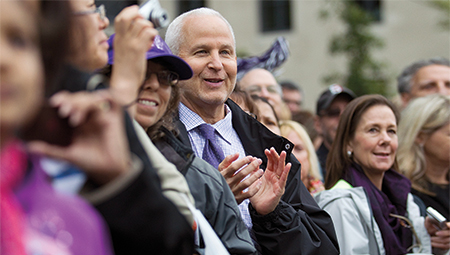
President Schapiro at March Through the Arch. Credit: Ray Whitehouse ’12
Supporting students and creating a sense of community was key for Schapiro, who helped launch important student traditions such as the March Through the Arch, a rousing welcome for new students.
“In 2011 I was at an event where students were asked about their most meaningful moment at Northwestern,” says Schapiro, “and one student talked about walking through the Arch and how great it was to participate in this long-standing tradition.”
Schapiro smiles at the memory. “I didn’t have the heart to say that was only the second time we had done it. But it’s become an important symbolic event now.”
That event and others have helped to create a more unified Northwestern identity. And Schapiro, who has a notoriously vast collection of purple in his wardrobe, leads by example when it comes to wearing his pride.
“I was surprised when I got here to see people wearing sweatshirts from other universities. That really bothered me,” admits Schapiro, who told the Wall Street Journal that he has around 90 purple ties, 50 purple sweaters and 100 purple shirts. “So we gave out a lot of swag to students, and now you see people having pride in Northwestern purple.”
The effort has become so well known on campus that the Daily Northwestern’s guide for new students includes the term “Morty-fied,” defined as “being embarrassed because Morty spotted you not wearing purple.”
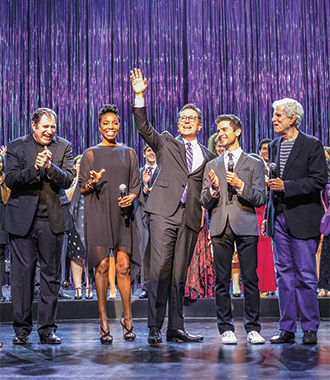
Heather Headley ’97, Stephen Colbert ’86, ’11 H and Adam Kantor ’08 at the School of Communication’s A Starry Night celebration. Credit: Jim Prisching
Schapiro’s passion for purple even caught the attention of Stephen Colbert ’86, ’11 H, who visited campus as part of the School of Communication’s A Starry Night celebration in 2018. The TV funny man and late-night host set his comedic sights on Schapiro in his opening monologue.
“A lot of people know me as the guy who tells jokes about the president,” Colbert began, “but the only president I want to talk about tonight ... is Morty Schapiro. Where are you, Morty? There he is! Of course he’s here! Morty’s everywhere! Everybody loves Morty. He’s always out shaking hands, making connections. ... It’s like he’s the mayor.
“Morty’s done so much for the school. He took something great and made it greater. ... The man lives and breathes Northwestern. He wears purple, he bleeds purple, he is purple! He is more purple than if the Grimace gave birth to a baby fathered by Prince in a pool full of Welch’s grape juice.”
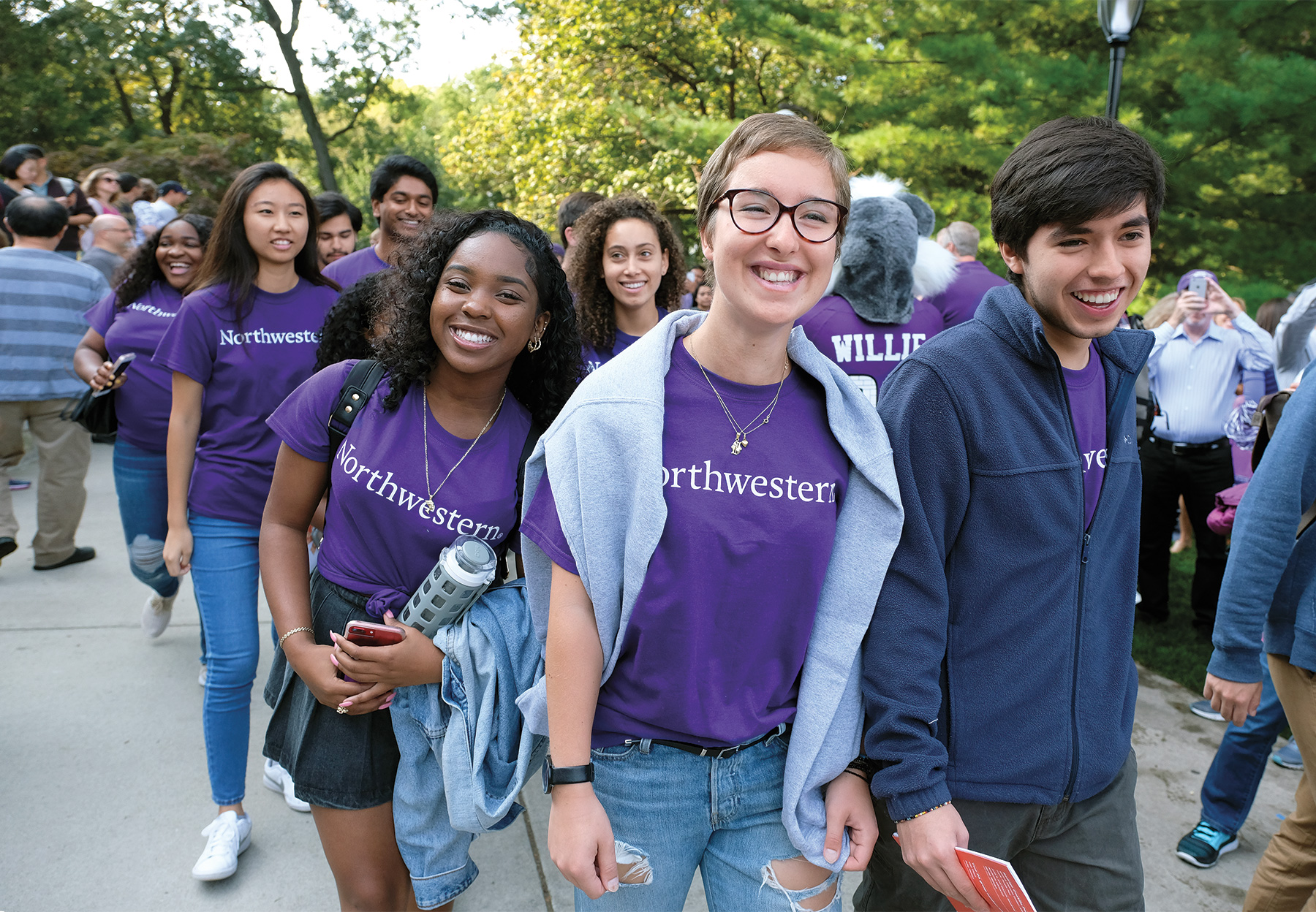


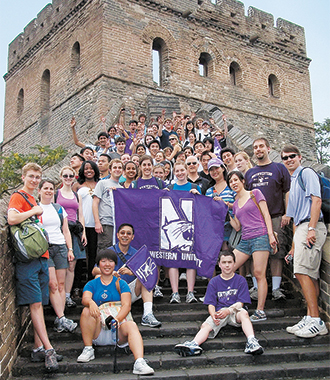
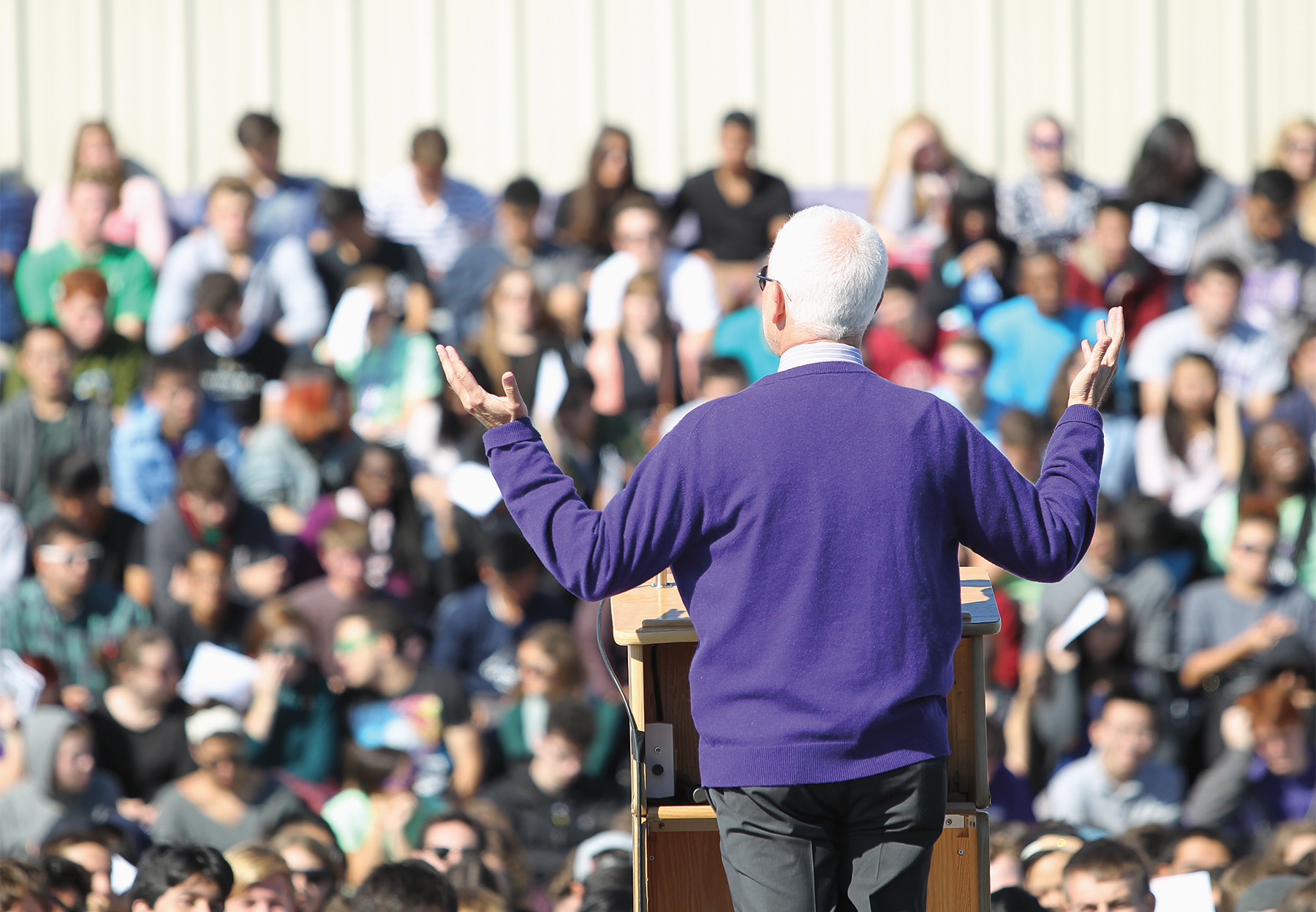
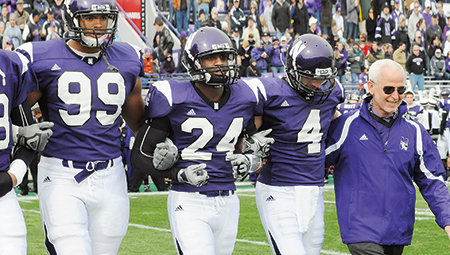
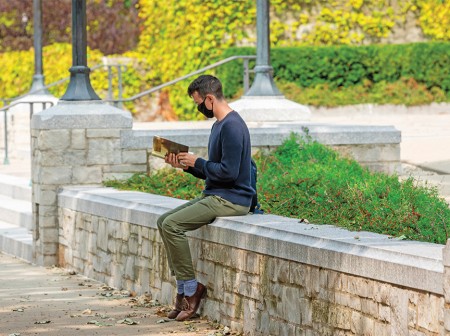
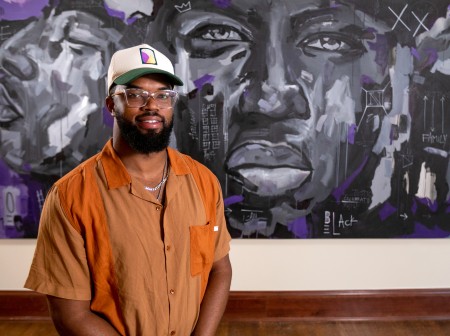
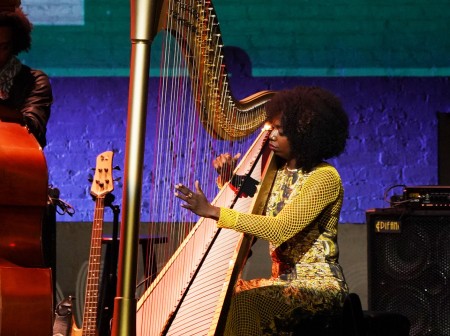
Reader Responses
While Morty and I don't always agree on certain aspects of how the university is being run, I am deeply respectful of his passion for Northwestern. I also really admire his responsiveness to emails from alumni — he would often answer my emails within a few hours if not earlier. Robert Strotz was the university president while I was a student and his lack of interest in athletics was reflected in the abysmal results I witnessed from the stands at football and basketball games. Morty's interest in and support of NU student-athletes has not only elevated the quality of our teams but expanded and enhanced the Northwestern experience for students (and made Homecoming a lot more fun for us alumni!).
—Stacey Silverman Singer '84, Englewood, Colo.
An interesting review of Morty's tenure. His first year was the same as our daughter's freshman year, and we found him quite personable during the times we met him.
It would be nice if the athletic teams and the athletic department followed Morty's enthusiasm for wearing purple. It seems the uniform colors, as well as the sideline warmup suits have become black and gold, along with gray. Let's show our "Purple Pride" on a constant basis. At least with Under Armor as the sponsor, the University's name has reappeared on the uniforms.
—Darryl Ellis Buffalo Grove, Ill., via Northwestern Magazine
Morty has been and is amazingly great. Surely there is an ongoing role for him at Northwestern. When you find someone so special, never ever let them go!
—Jon Castor '70, Woodside, Calif., via Northwestern Magazine
Morty was always approachable. Whether it was when he came to a Hillel luncheon to discuss his book The Fabulous Future?, chatting with me when my kids graduated or answering a nonspecialist's economics question via email, he was always there.
—Ben Katz Chicago, via Northwestern Magazine
No one has commented on this page yet.
Submit a Response